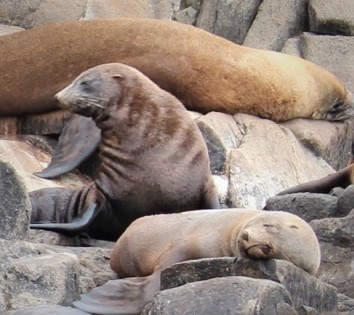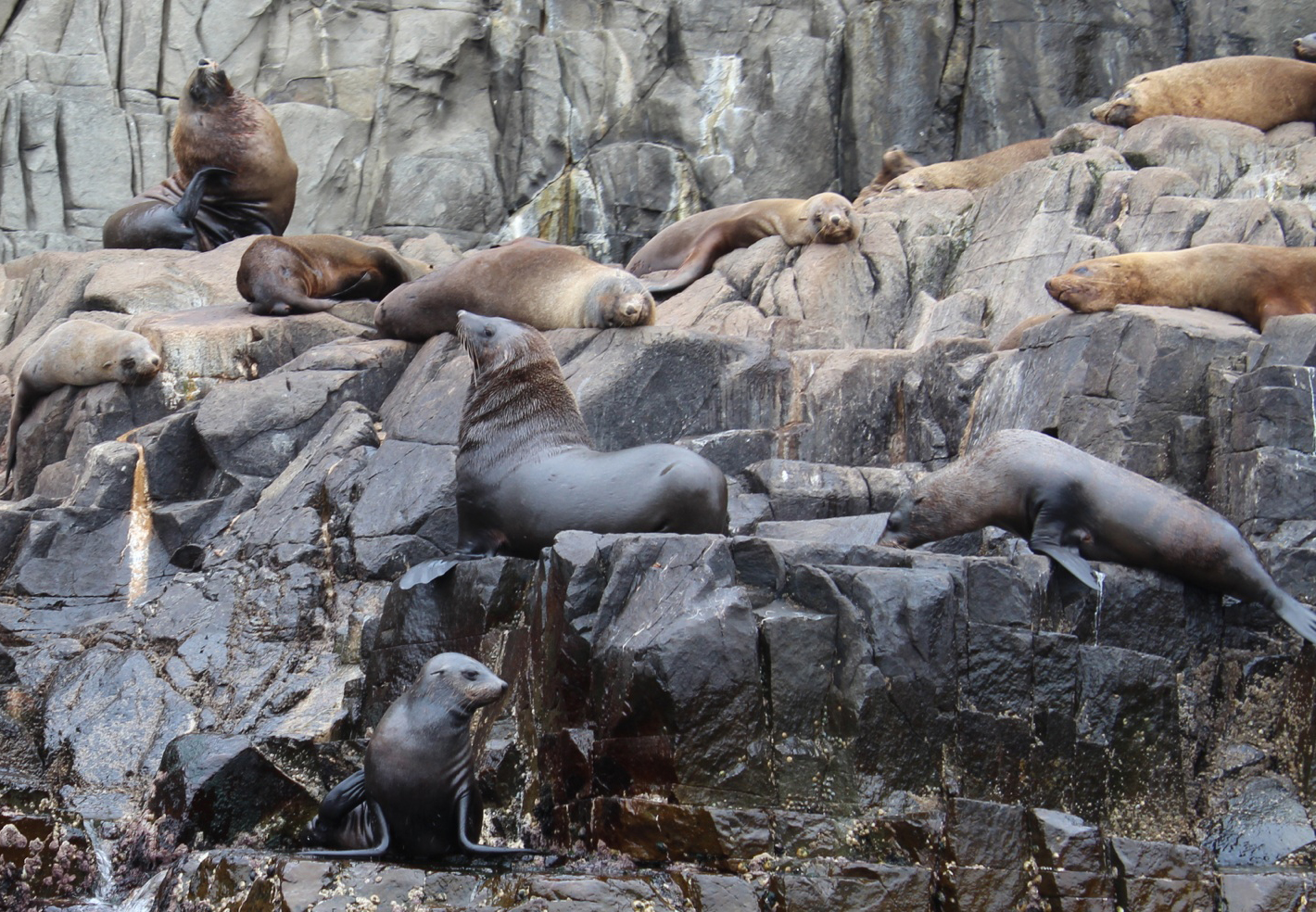
A new study into perceptions of interactions between Tasmanian fisheries and native fur seals has revealed the complexities of this challenging issue.
The honours research was based on the results of a 2016 survey of commercial and recreational fishers, resource and environment managers, and the general public.
Led by IMAS student Cloe Cummings and published in the journal Biological Conservation, the study contrasted these perceptions with available ecological and historical data to highlight areas to focus on in the future.
The survey responses highlighted the challenges of seal interactions for many Tasmanian fishers, which can have financial and mental health implications for fishing communities.
The most frequent outcomes of interactions for both commercial and recreational fishers were damaged gear, lost catch, and damaged catch.
 One finding of the study was a strong perception among fishers surveyed (98% of commercial and 85% of recreational) that seal numbers were increasing, and that just over half of these groups believed that interactions had increased due to increasing seal numbers.
One finding of the study was a strong perception among fishers surveyed (98% of commercial and 85% of recreational) that seal numbers were increasing, and that just over half of these groups believed that interactions had increased due to increasing seal numbers.
However, it seems more likely seals have become habituated to fishing operations, so interactions with fishers are changing.
Population survey data show that the Australian fur seal population increased from the late 1980s to the early 2000s after near extinction by sealing.
(Photos: Louise Creely)
But from the early 2000s, pup production (how fur seal populations are measured) has stabilised, although some small new colonies have been established at the edge of the species’ range.
In 2013, the whole-population census (TAS and VIC) recorded the first decrease in annual pup production since species-wide protection was given in 1975. And while the long-nosed fur seal is increasing in Tasmania, it is doing so from a low population level.
Current levels are under 1500 pups produced per year in Tasmania, and the breeding range is restricted to the south coast of the state.
Survey participants were also asked about which management strategies they believed would be the most effective in addressing fishery-seal interactions.
There were different levels of support for different strategies within each of the groups (commercial fishers, recreational fishers, managers and the public). However, in general, most fishers believed controlled population culls would be the most effective, followed by targeted removal of problem individuals.
In contrast, the largest proportions of the public and managers were more likely to support non-lethal techniques, especially modifying fishing gear and practices to minimise interactions.
Members of the public emphasised an ecosystem approach, education, and transparency as important dimensions of management.
While fishing communities around the world sometimes advocate seal culling to address fisheries-seal interactions, there is a lack of evidence to support this as an effective management strategy.
Additionally, culling can have unexpected and potentially negative ecosystem level impacts.
A combination of further research, reducing fish rewards from humans to seals (e.g. fishing discards, direct feeding, bycatch), and investment in technical mitigation methods for specific fisheries, represent the most promising current strategies to understand and reduce fisheries-seals interactions.
Thank you to everyone who participated in the survey. We will provide the link to the full research article in Biological Conservation, as soon as it is available. Thanks for your patience.